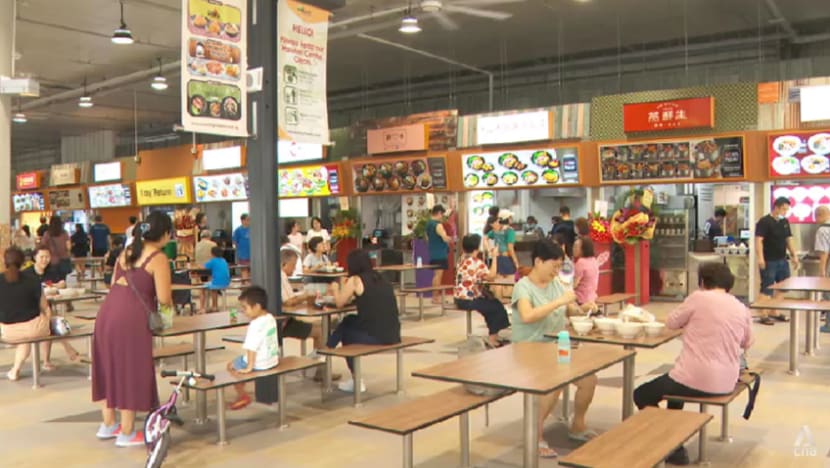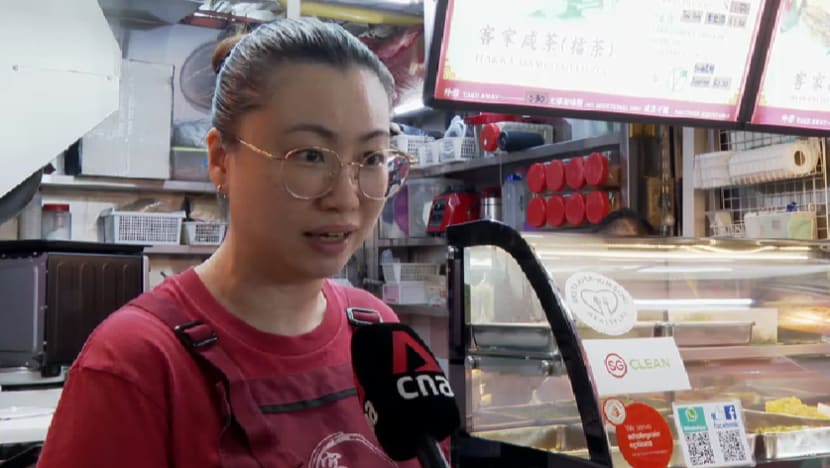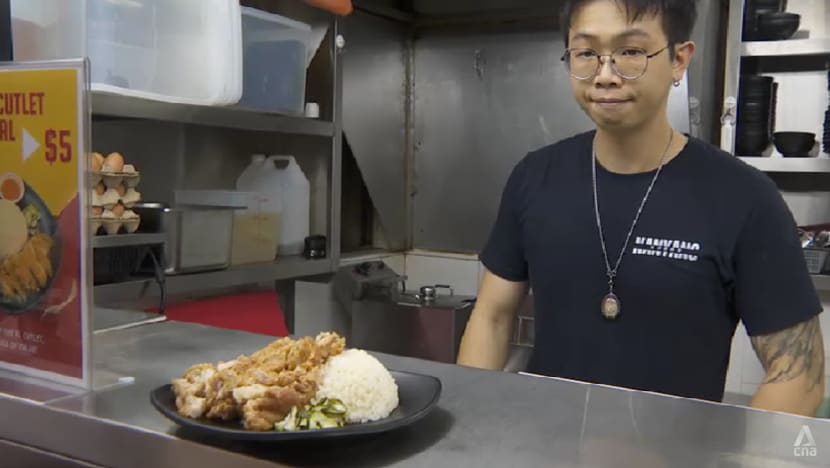As a new generation takes over, how will Singapore’s hawker scene evolve?
Some young hawkers, even those without F&B experience, are taking up programmes by the National Environment Agency to help them kick-start their venture into food centres.

Diners at a hawker centre in Singapore. A food blogger said while the local hawker scene is thriving, times are changing as pioneers retire and make way for a wave of young vendors with fresh ideas.

This audio is generated by an AI tool.
SINGAPORE: Six years ago, Ms Michelle Yee became disenchanted with her job.
The office manager wanted to venture into a career where she could work with her husband, a field service engineer, and not have to answer to a manager.
Despite a lack of food and beverage (F&B) experience, the pair plunged into the hawker trade with a stall at Chinatown Complex Food Centre selling thunder tea rice and yong tau foo.
Just a year later, the couple broke even, proving such goals are not just pipe dreams.
“We wanted to spend time together and do our own thing, and we got it. And, we don't have to report to other people,” Ms Yee, 40, told CNA from her Hakka Fun HamCha & Yong Tou Fu hawker stall.

Over at Hong Lim Food Centre, another fresh face is keeping the hawker culture vibrant with a crispy take on chicken rice.
Mr Louis Saw, who used to be a chef at restaurants, is five months into his hawker venture and has sunk S$20,000 (US$15,000) into his stall so far.
Although he has not seen profits yet, the 30-year-old is determined to continue chasing his dream of entrepreneurship.
“The food we have to offer in Singapore is very comparable with the rest of the world, and I will rate it very highly,” said the owner of Nanyang Fried Chicken Rice stall.
“I decided to become a hawker because I want to be part of this culture and represent Singapore.”

NEA’S HAWKER PROGRAMME
Young stallowners like Ms Yee and Mr Saw are among a new generation of vendors gradually becoming a common sight at the nation’s hawker centres.
Both were given a head start under the National Environment Agency’s (NEA) Incubation Stall Programme, where they learnt the ropes of the trade.
The initiative offers subsidised rents for the first 15 months to Singaporeans and permanent residents who are aspiring hawkers, in order to help them establish their stalls.
Ms Yee said she attended a crash course on starting a business, passed the food tasting session, and was then given a list of stall locations to choose from. The programme also helped her save S$6,000 in equipment costs, as stalls under the initiative come with basic fittings to lower the hawkers' upfront capital investment.
Mr Saw similarly found the assistance crucial in helping him hit the ground running.
“When you’re starting out as a new business, the rental savings really … and help us tide through the first few months, (allowing) us to grow our business,” he said.
“(My) goal is to solidify the business, build a constant customer stream, and when we have the ability to scale up, we scale up from there.”
However, he said the trickiest part of running a hawker stall is finding labour, as it is difficult to attract workers.
To ease such manpower difficulties, the NEA last month announced hawker stalls can hire long-term visit pass holders as stall assistants from Jan 1.
The agency said the Incubation Stall Programme has helped 41 people, including Mr Saw, so far this year.
While Ms Yee has seen some success, she cautioned aspiring hawkers to understand the realities of the job before taking a leap of faith.
“The working environment is totally different from what I've done in the past, from an air conditioned environment to a very hot environment, and long working and standing hours,” she said.
She also quipped: “And, the hawker business won't make you rich. Don’t have that fantasy for the hawker line.”
CHANGING FACE OF SG HAWKERS
A food blogger said while the local hawker scene is thriving, times are changing as pioneers retire and make way for a wave of young vendors with fresh ideas.
“These younger hawkers, many want to serve more fusion or modern hawker food. There are certain foods that are disappearing, and certain foods that are doing well,” said Dr Leslie Tay, author of popular food blog ieatishootipost.
Based on his observations, char kway teow is one such classic hawker dish that is “dying”.
“In the last 14 years, there haven't been any new hawker stars but we're seeing a lot of char kway teow legends retiring,” he said.
“On the other hand, hokkien mee is doing very well. Lately, we’ve been seeing quite a few young hawkers doing hokkien mee. So, that's a very promising sign.”
He said this could be due to younger hawkers being more financially motivated – hokkien mee can be sold at higher prices by using better ingredients such as fresher and bigger prawns. On the other hand, char kway teow has not been able to break the price ceiling.
Dr Tay added the scene will need to evolve to attract more young people to the trade. This includes providing bigger stalls for a more comfortable working environment, keeping stalls affordable and making manpower available.
“We'll always have people who want to be hawkers, but we have to make sure that it's profitable for them,” he said.
“We also need to not look at hawkers to always be cheap and good, because there are certain hawkers who want to make better dishes, but they can only do so if they have better ingredients … and customers should be willing to pay a little bit more for such hawkers.”
He brought up concerns that the hawker culture will diminish in time due to competition from restaurants and an increasing number of vendors serving fusion food.
“(The hawker scene) is evolving as our country changes,” he added.
“In the future, the hawker centres will not be the same as today. Most will be serving different kinds of food. I think it's inevitable.”





















